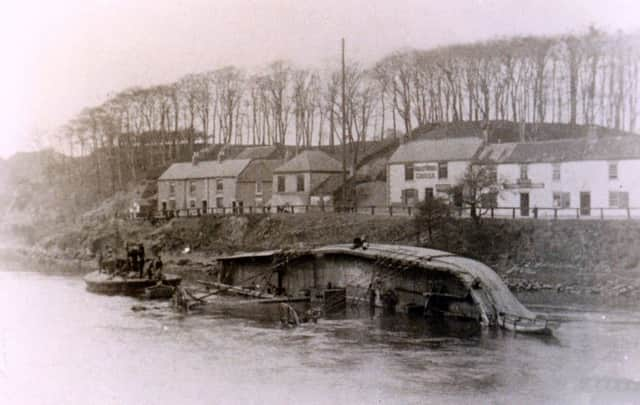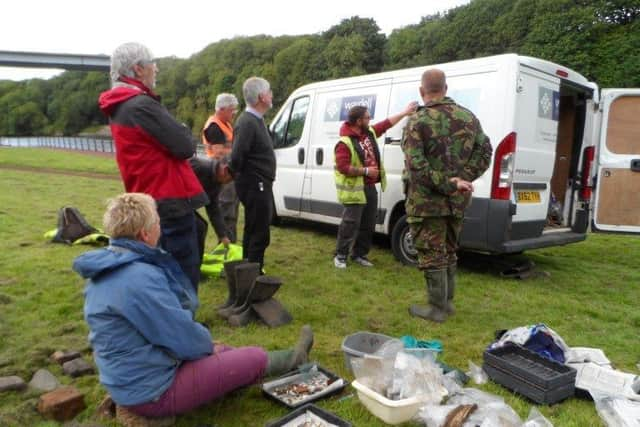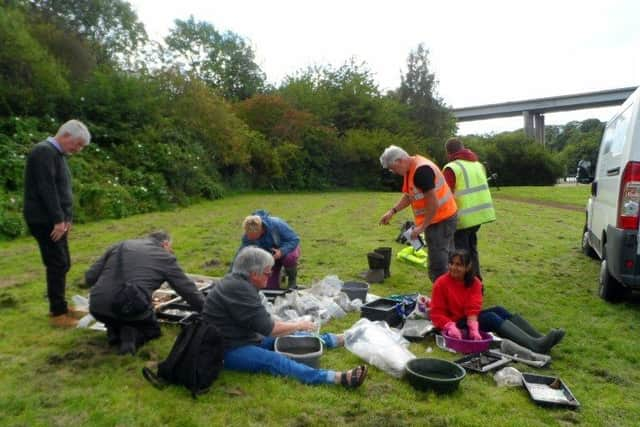Big dig hopes to uncover more evidence of Sunderland's past


An archeological dig is being extended to look at a part of Wearside where wooden sailing ships would have been built in the mid-18th century. It’s the next and final phase of the Sunderland’s Forgotten Stones project.
Historian Beverley Taylor, a member of the Sunderland Antiquarian Society, said: “The next phase will focus on Nab End and the surrounding area.”


Advertisement
Hide AdAdvertisement
Hide AdThe study began last year when the Castletown Neighbourhood Action Group got funding from the Heritage Lottery Fund. It was used explored the origins of ancient stones known as the brigstones, which once spanned the Wear between North and South Hylton.
Professional archaeologists and volunteers tried to discover the secrets of the stones, but despite the team’s best efforts, they refused to give up their secrets.
But hopes are high for the next phase. Beverley added: “Once again, Archaeologists Wardell Armstong will take charge of the project. Their initial research has suggested there is evidence of a tar distillery with its associated tar vats on the southern tip of Nab End, as well as an area marked on maps as a ‘brickfield’.
“On the northern edge is a clay pit and a brick kiln, and on the north eastern side is the site of the former pottery, North Hylton Potworks which was established by William Maling in 1762.”


Advertisement
Hide AdAdvertisement
Hide AdThere’s a belief that there were industrial and residential buildings from the 18th century but experts hope to uncover evidence of even older structures when they concentrate on three sites.
* Site 1 will excavate a substantial pottery spoil heap. Kiln furniture and evidence of saggars (the large coarse pots where pottery was placed during the firing process) have already been found.
* Site 2 contains an old brick kiln next to a former clay pit, possibly in use between 1873 and 1896, although “it is not clear at present exactly what it was used for,” said Beverley.
* Site 3 is on the headland on the western bank of the River Wear, and might have been a tip for pottery waste, as well as shipbuilding yards.
Advertisement
Hide AdAdvertisement
Hide AdWork will start in the middle of this month and volunteers are needed. They will get to work with professional archaeologists, learn excavation techniques and the concept of stratigraphy (looking at the order and position of layers of archaeological remains in the ground).
They will also get to join in with photographic and written recording; planning and section drawing; washing the excavation’s finds washing; and doing magnetic and geophysical surveying.
The project will run until the middle of August with regular updates at www.sunderlands-forgotten-stones.com
To volunteer, visit the website or send an email to sunderlandsforgottenstones @gmail.com
Advertisement
Hide AdAdvertisement
Hide AdBeverley added: “The project will look at the potential archaeological features waiting to be discovered in this location, including those from the shipbuilding yards present here during the mid-eighteenth century when wooden sailing ships would have been constructed on the site.”
There was praise too for the help received which had enabled the project to continue.
Beverley said: “We can’t thank the Heritage Lottery Fund enough for their ongoing support while we discover the secrets of Sunderland’s industrial heritage, and would also like to thank the people of Sunderland who are giving up their time to help us find out more about our history by getting involved with this incredible project.”
Hopes are high that the investigation team will uncover more of Wearside’s maritime secrets in time for the visits of the tall ships this July.
Advertisement
Hide AdAdvertisement
Hide AdBeverley added: “This ties in beautifully with the timing of The Tall Ships Races, which will be happening in Sunderland around the same time. Hopefully the project can unearth some secrets from our shipbuilding past.”
We would love to hear from more people with their own memories of Wearside nostalgia to share.
It could be on any topic you would like us to highlight. Get in touch by emailing [email protected]